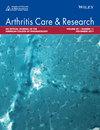Racial Disparities and Achievement of the Low Lupus Disease Activity State: A CARRA Registry Study
Abstract
Objective
Differential disease control may contribute to racial disparities in outcomes of childhood-onset systemic lupus erythematosus (cSLE). We evaluated associations of race and individual- or neighborhood-level social determinants of health (SDoH) with achievement of low lupus disease activity state (LLDAS), a clinically relevant treatment target.
Methods
In this cSLE cohort study using the Childhood Arthritis and Rheumatology Research Alliance (CARRA) Registry, the primary exposure was self-reported race and ethnicity, and collected SDoH included insurance status and area deprivation index (ADI). Outcomes included LLDAS, disease activity, and time-averaged prednisone exposure. Associations among race and ethnicity, SDoH, and disease activity were estimated with multivariable regression models, adjusting for disease-related and demographic factors.
Results
Among 540 children with cSLE, 27% identified as Black, 25% identified as White, 23% identified as Latino/a, 11% identified as Asian, 9% identified as more than one race, and 5% identified as other. More Black children (41%) lived in neighborhoods of highest ADI compared to White children (16%). Black race was associated with lower LLDAS achievement (adjusted odds ratio 0.56, 95% confidence interval [CI] 0.38–0.82) and higher disease activity (adjusted β 0.94, 95% CI 0.11–1.78). The highest ADI was not associated with lower LLDAS achievement on adjustment for renal disease and insurance. However, renal disease was found to be a significant mediator (P = 0.04) of the association between ADI and prednisone exposure.
Conclusions
Children with cSLE who identified as Black are less likely to achieve LLDAS and have a higher disease activity. Living in areas of higher ADI may relate to renal disease and subsequent prednisone exposure. Strategies to address root causes will be important to design interventions mitigating cSLE racial disparities.


 求助内容:
求助内容: 应助结果提醒方式:
应助结果提醒方式:


